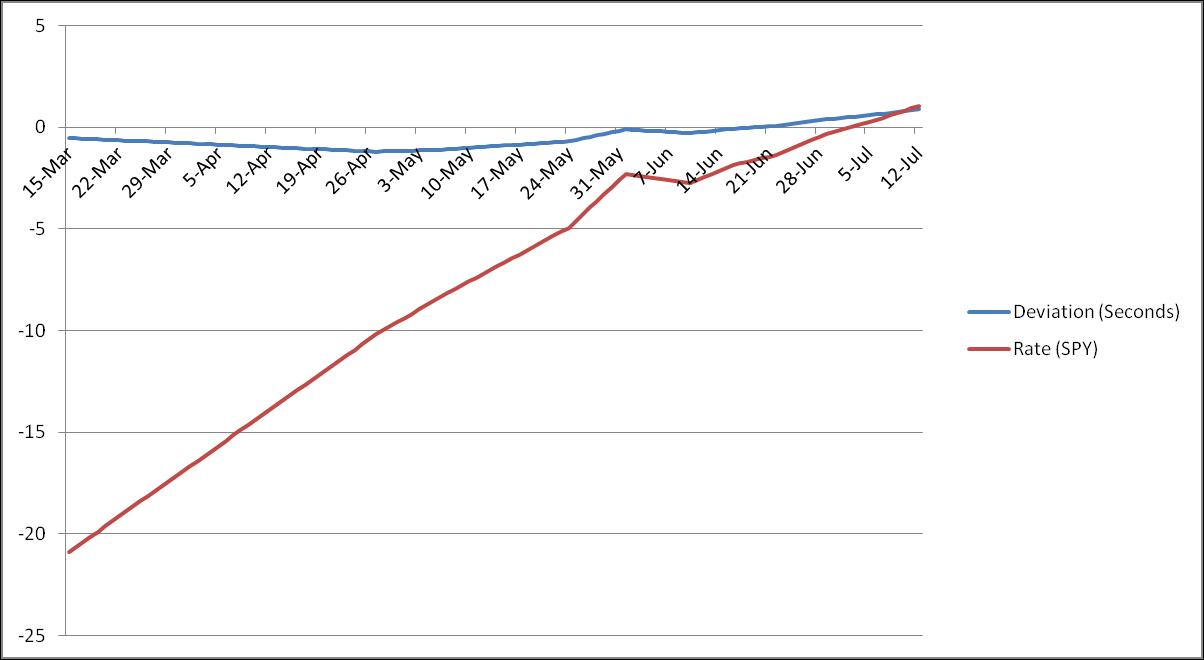
Omega Prototype
Timing Data
I began testing this watch shortly before the summer break and then tried adjusting the rate. This led to another trip to the Service Centre and I got the watch back whilst on holiday in the UK. Its timing spreadsheet was, therefore, reset.
Results so far...
| Day | Deviation | SPY | Correction |
| 0 | 0.13 | 0 | |
| 1 | 0.231 | 36.8 | |
| 2 | 0.17 | 7.3 | |
| 7 | 0.333 | 10.5 | |
| 8 | 0.384 | 11.5 | |
| 12 | 0.608 | 14.5 | |
| 13 | 0.628 | 13.9 | |
| 14 | 0.673 | 14.1 | |
| 15 | 0.719 | 14.3 | |
| 16 | 0.764 | 14.4 | |
| 0 | 0.492 | 0 | reset after service |
| 18 | -0.538 | -20.8 | |
| 61 | -1.212 | -10.1 | |
| 70 | -1.11 | -8.3 | |
| 88 | -0.7 | -4.9 | |
| 96 | -0.112 | -2.2 | |
| 105 | -0.296 | -2.7 | |
| 111 | -0.076 | -1.8 | |
| 117 | 0.054 | -1.3 | |
| 124 | 0.38 | -0.3 | |
| 130 | 0.574 | 0.2 | |
| 137 | 0.878 | 1 |
The change in rate from -20 to 1 SPY, seen in the first 137 days since the second round of testing began, was likely due to the changing weather. We had, over the course of those 137 days, from late February to mid July, seen Hong Kong go from near record lows in winter through to summer heatwaves. It will be interesting to see whether the rate continues to change as we move into summer (possibly back up to the 14 SPY that we saw last summer) and whether it rebounds back to the same -20 figure, next winter. If the rate is 'good' for the local mean annual temperature, then changes throughout the year ought to cancel each other out. Regardless of whether its rate rebounds successfully, however, the Omega's recent change in rate has been far more dramatic than the relatively flat trajectories of most of my other 4 MHz watches.
Graph showing trends in deviation from Standard Time (in seconds) and rate (in seconds per year)

A Note on the Accuracy and Reliability of Timing Results
There is always going to be an unknown margin of error in any method of timing, and I estimate that each timing event could be off by as much as 0.1 second (though in practice I believe my results to be somewhat better than this). As a consequence of this potential margin of error, results over short periods of time are unreliable. Ultimately, the only result that matters is that which comes at the end of a full 365 days. Where interim results show consistent timings or steady trends, however, then it is safe to assume that those results are fairly accurate.